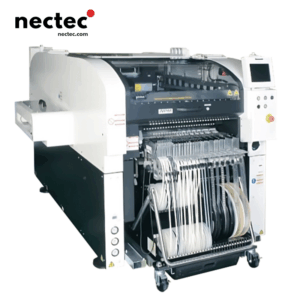In the rapidly evolving world of electronics manufacturing, technology advancements are setting the pace of production efficiency and quality. The high-speed Surface Mount Technology (SMT) pick and place machines are at the forefront of this evolution. As the demand for faster, more accurate assembly processes intensifies, understanding the factors that influence your selection of a pick and place machine becomes vital.
Understanding SMT Pick and Place Machines
SMT pick and place machines are automated equipment designed to place components onto a printed circuit board (PCB). These machines significantly enhance manufacturing speed and accuracy, making them a critical asset for any electronics production environment. With high throughput capabilities, modern machines can handle diverse component sizes and placements, enabling the creation of sophisticated electronic devices.
The Importance of Speed in PCB Assembly
In the competitive electronics market, production efficiency can greatly influence profitability. High-speed SMT machines optimize the assembly line by minimizing cycle times and maximizing output. Companies are under constant pressure to meet tight deadlines while ensuring high-quality production. Thus, selecting correctly designed equipment can lead to substantial improvements in operational efficiency.
Key Features to Look For When Choosing a High-Speed SMT Pick and Place Machine
1. Placement Speed
Placement speed, measured in components per hour (CPH), is a critical feature that directly influences productivity. Leading machines can place thousands of components per hour, making them suitable for high-volume production runs. When selecting a machine, assess both the peak and average speeds to understand how they align with your production goals.
2. Component Compatibility
The ability to handle various components is crucial. Ensure that the machine you choose can accommodate different types of resistors, capacitors, and integrated circuits. Some machines feature flexible feeding systems, while others include advanced vision systems for component recognition to help avoid errors during placement.
3. Accuracy and Repeatability
The precision of component placement is paramount in electronics manufacturing. High-speed pick and place machines should have an accuracy of ± 0.1 mm or better. Investing in a machine with high repeatability ensures consistent quality, minimizing defects that could lead to costly rework or product failures.
4. Ease of Use
The complexity of the software and user interface can significantly impact operational efficiency. A machine with an intuitive interface enables quicker training for new operators and reduces downtime. Moreover, consider features such as offline programming capabilities for faster setup times between production runs.
5. Maintenance and Support
Regular maintenance is essential to keep high-speed SMT machines operating optimally. Evaluate the manufacturer’s support structure, warranty options, and the availability of spare parts. Machines with a reputation for reliability and robust customer support tend to be better long-term investments.
Benefits of High-Speed SMT Pick and Place Machines
Investing in high-speed SMT machines offers various benefits beyond increased output. These include reduced labor costs, minimized production errors, and enhanced product quality. Automation results in a streamlined workflow, allowing manufacturers to dedicate their human resources to more value-added tasks, thus increasing overall operational efficiency.
The Path to Automation in Electronics Manufacturing
With the rise of Industry 4.0, integrating high-speed SMT machines into the production line is becoming increasingly popular. Automation in electronics manufacturing not only improves speed and accuracy but also facilitates the collection and analysis of production data. Machines integrated with IoT technology can monitor production in real-time, providing insights that help optimize processes further.
Evaluating Cost-Effectiveness
While the initial investment in a high-speed SMT pick and place machine can be substantial, understanding the return on investment (ROI) helps justify the costs. By calculating the increase in production capacity, reductions in labor costs, and potential savings from improved quality, manufacturers can make informed decisions about their equipment investments.
Exploring Various Brands and Models
Various brands offer high-speed SMT pick and place machines with unique features tailored to different manufacturing needs. While evaluating prospective machines, consider leading names in the industry renowned for their reliability and performance. Research customer reviews and case studies to gain insight into how specific models have impacted other manufacturers’ operations.
The Future of SMT Technology
As the electronics manufacturing industry continues to advance, innovations in SMT technology are expected to play a pivotal role in shaping future production methodologies. Features such as machine learning, AI-driven optimizations, and enhanced automation will likely become standard in high-speed SMT equipment, dramatically transforming production capabilities.
Final Thoughts
High-speed SMT pick and place machines represent a significant investment; however, their impact on the efficiency and quality of electronics manufacturing is undeniable. By thoroughly understanding the features and benefits, as well as assessing your operational needs, you can choose a machine that not only meets your production demands but also propels your business toward future advancements.






